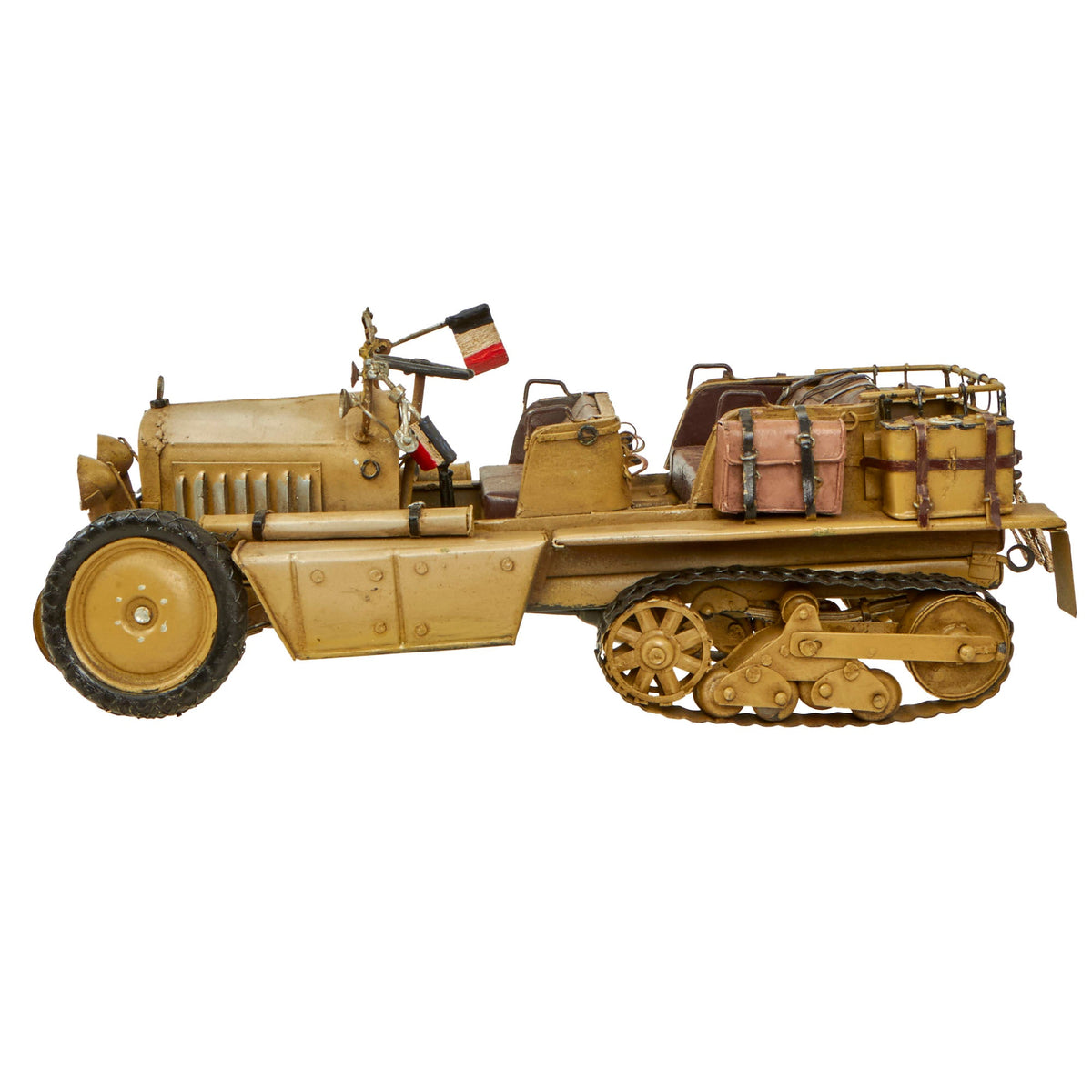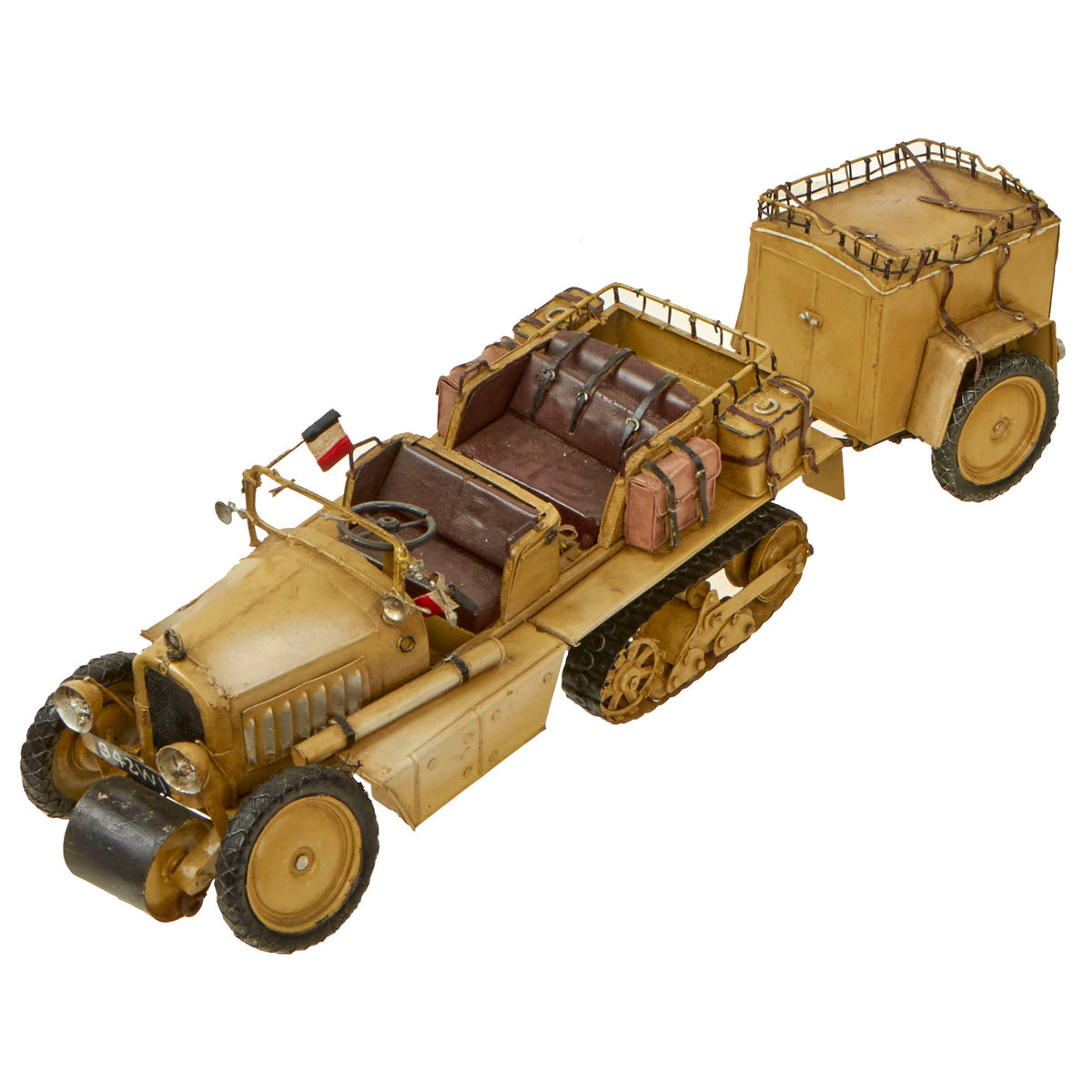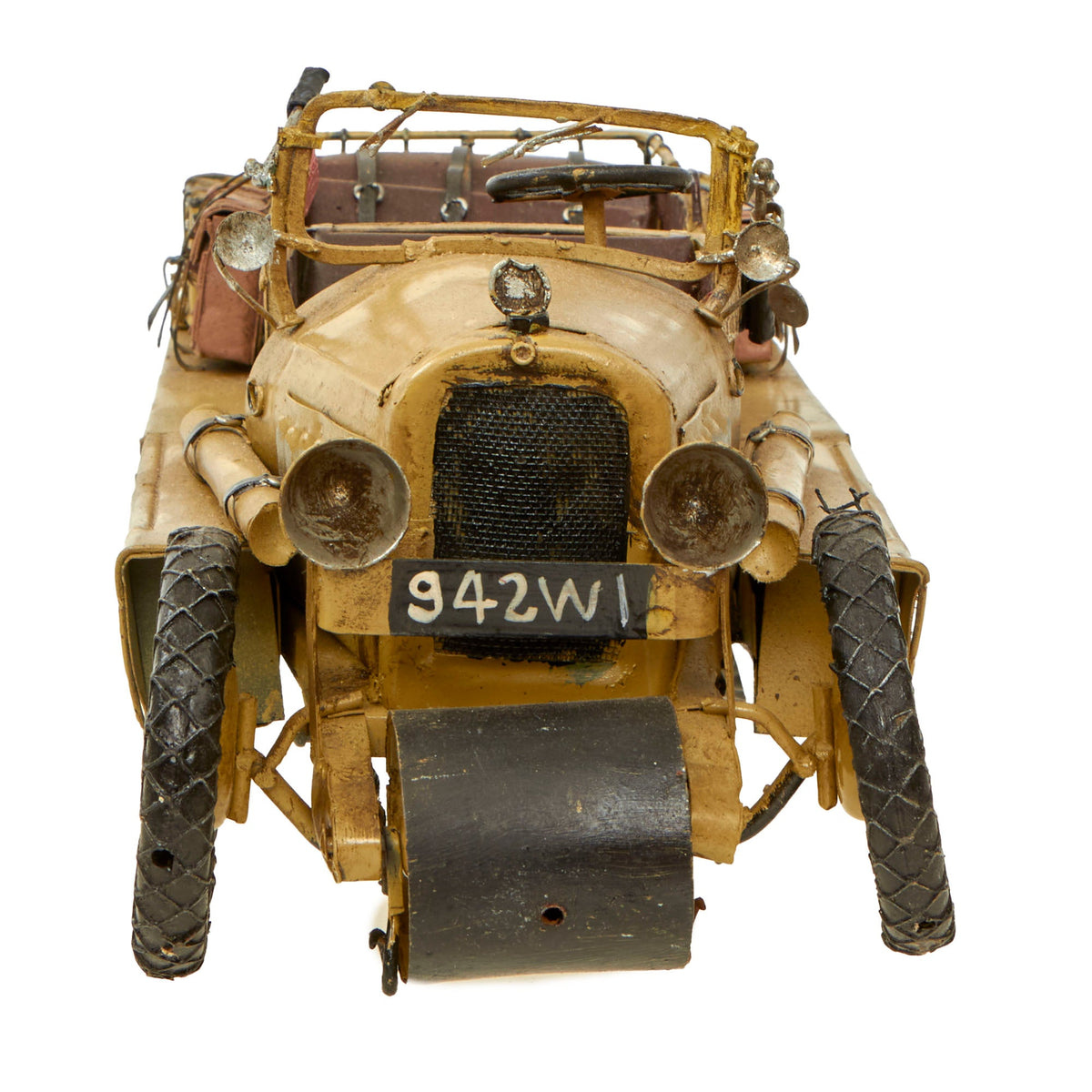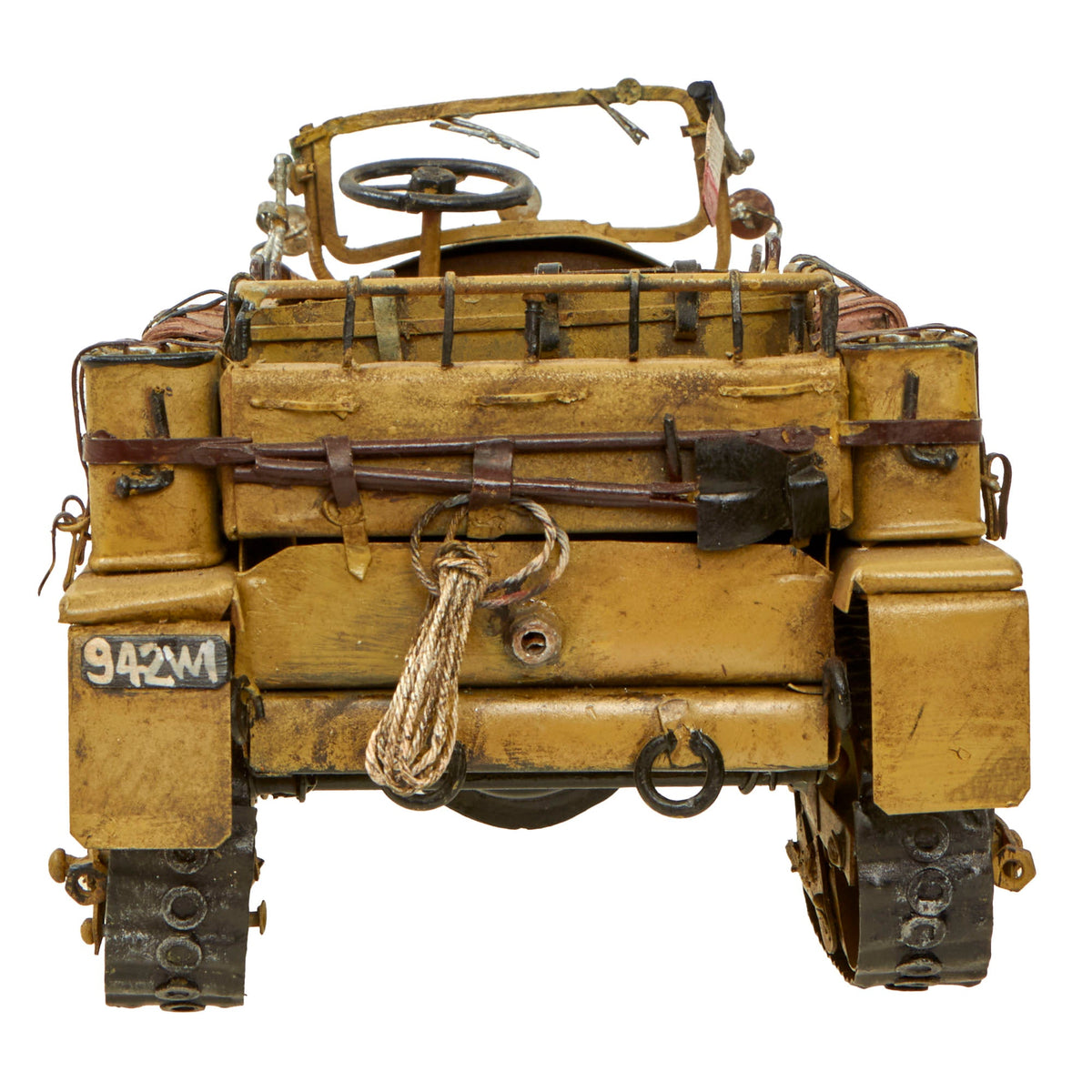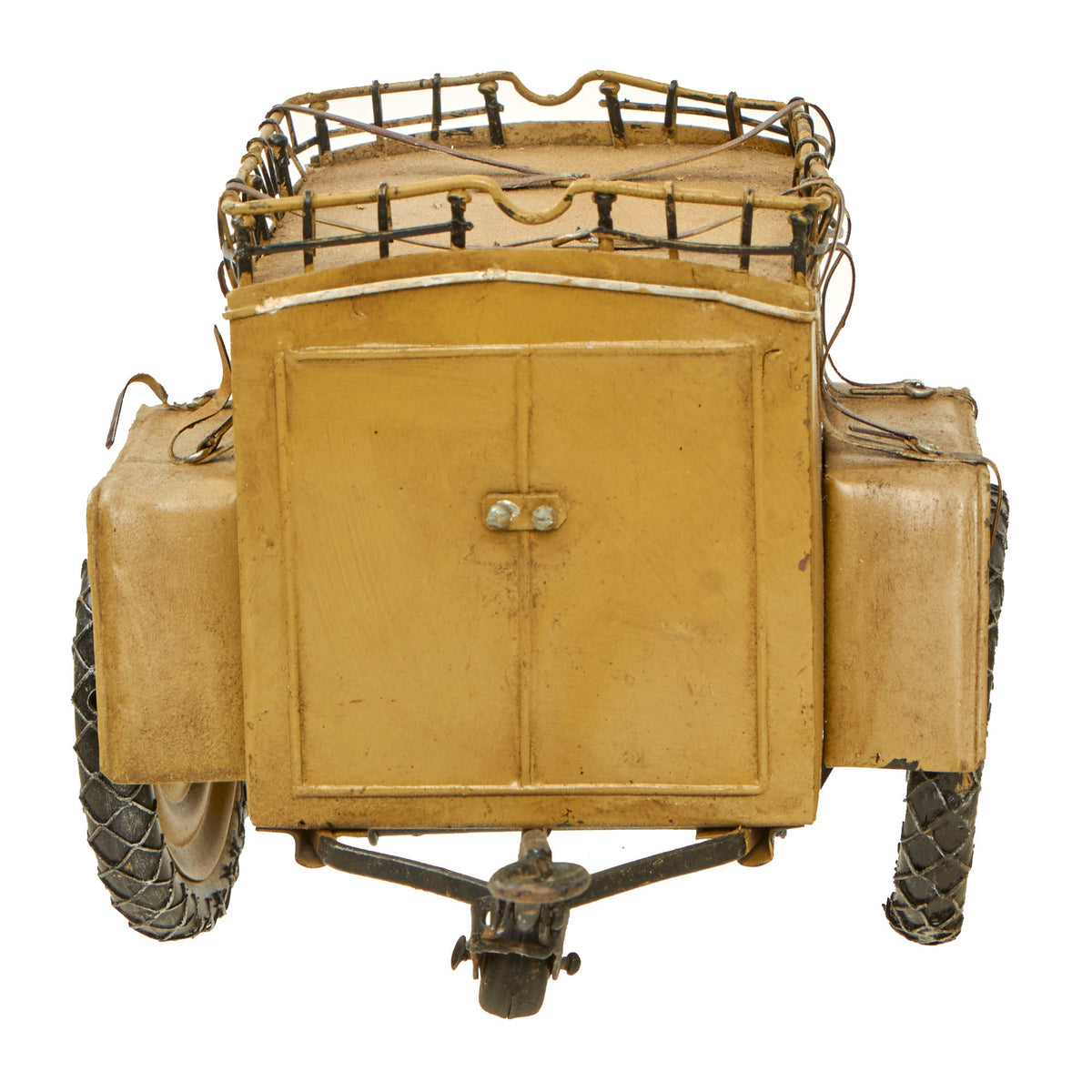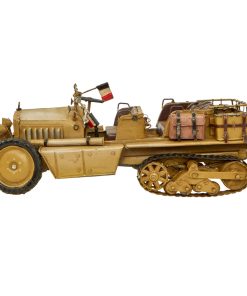Original French WWII Model Citroën Half-Track Type P17 with Trailer – Contemporary Folk Art Steel Model Original Items
$ 249,95 $ 99,98
Original Item. Only One Available. In the 1920s and 1930s Citroën developed a long line of half-tracks based on the Kégresse patent, the first successful design being the P17. This is a stellar piece of French WWII folk art, a Citroën P17 half-track with a trailer and adorable hand-painted French flags flying from the windshield.
The halftrack is a very well made replica with incredible detailing, especially the buckles on the trailer and seats, the rope in the back of the truck, and all the supplies strapped to the sides. This piece exhibits serious craftsmanship. Upon close inspection, it’s clear this was a custom-done piece and not a mass-produced toy. It measures roughly 12 x 4 ½ x 5” with the flags turned down. The trailer measures roughly 6 x 4 x 4½”. When the trailer is attached, the entire unit measures around 18” long. The slot to attach the trailer to the truck seems to have broken off but its hardly noticeable and they will still display very well together. The half-track is not built to move/rotate, so it is meant more as a display piece. The front wheels and trailer wheels do rotate, however. There is a small license plate on the rear reading 942 WI.
The French army used 1,442 P17 halftrack tractor as listed by September 1939. They were used a prime movers for the 25mm AA guns, 47mm AT guns and 75mm AT and field guns. The P14 entered service at first for extensive tests, deployed in various infantry units which needed an all-terrain tractor. Production numbers were indeed way too low to fill the role of light artillery tractor everywhere; Other, cheaper and simpler vehicles were tasked for the same. Thus, the vehicle was mererly a droplet among vehicles fielded by the French Army between the hexagon and far flung colonies.
Between 1921 and 1937, Citroën produced half-track vehicles for off-road and military uses, using the Kégresse track system. In the 1920s, the U.S. Army purchased several Citroën-Kégresse vehicles for evaluation followed by a licence to produce them. This resulted in the United States Army Ordnance Department building a prototype in 1939. In December 1942, it went into production with the M2 Half Track Car and M3 Half-track versions. The U.S. eventually produced more than 41,000 vehicles in over 70 versions between 1940 and 1944. After their 1940 occupation of France, the Germans captured many of the Citroën half-track vehicles and armored them for their own use.
Vehicles captured by the Wehrmacht after the surrender of France were returned to service and redesignated Transportkraftwagen Ci 306(f) for the P14, although P17 were more numerous. They were not declined into specialized variants or armoured due to their weak chassis, but used in the same role as the French vehicles. These were among the very few non German half-tracks in service at the time, and disappeared in the furnace of 1944 combats in France.
Fast Shipping with Professional Packaging
Thanks to our longstanding association with UPS FedEx DHL, and other major international carriers, we are able to provide a range of shipping options. Our warehouse staff is expertly trained and will wrap your products according to our exact and precise specifications. Prior to shipping, your goods will be thoroughly examined and securely secured. We ship to thousands clients each day across multiple countries. This shows how we're dedicated to be the largest retailer on the internet. Warehouses and distribution centres can be located throughout Europe as well as the USA.
Note: Orders with more than one item will be assigned a processing date depending on the item.
Before shipping before shipping, we'll conduct a thorough inspection of the items you have ordered. Today, the majority of orders will be delivered within 48 hours. The delivery time will be between 3-7 days.
Returns
The stock is dynamic and we cannot completely manage it because multiple stakeholders are involved, including our factory and warehouse. So the actual stock may alter at any time. It's possible that you may not receive your order once the order has been made.
Our policy is valid for a period of 30 days. If you don't receive the product within 30 days, we are not able to issue a refund or an exchange.
You can only return an item if it is unused and in the same state as the day you received it. You must have the item in its original packaging.
Related products
Uncategorized
Uncategorized
Uncategorized
Uncategorized
Uncategorized
Armored Burgonet Helmet & Polearm from Scottish Castle Leith Hall Circa 1700 Original Items
Uncategorized
Uncategorized
Angolan Rebel 1970s era 60mm Inert Display Mortar from Angolan Civil War Original Items
Uncategorized
Uncategorized
Australian WWII Owen MK1 Machine Carbine SMG Custom Fabricated Replica with Sling Original Items
Uncategorized
Uncategorized
Uncategorized
Uncategorized
Uncategorized
Uncategorized
Uncategorized
Uncategorized
Uncategorized
Uncategorized
Band of Brothers ORIGINAL GERMAN WWII Le. F.H. 18 10.5cm ARTILLERY PIECE Original Items
